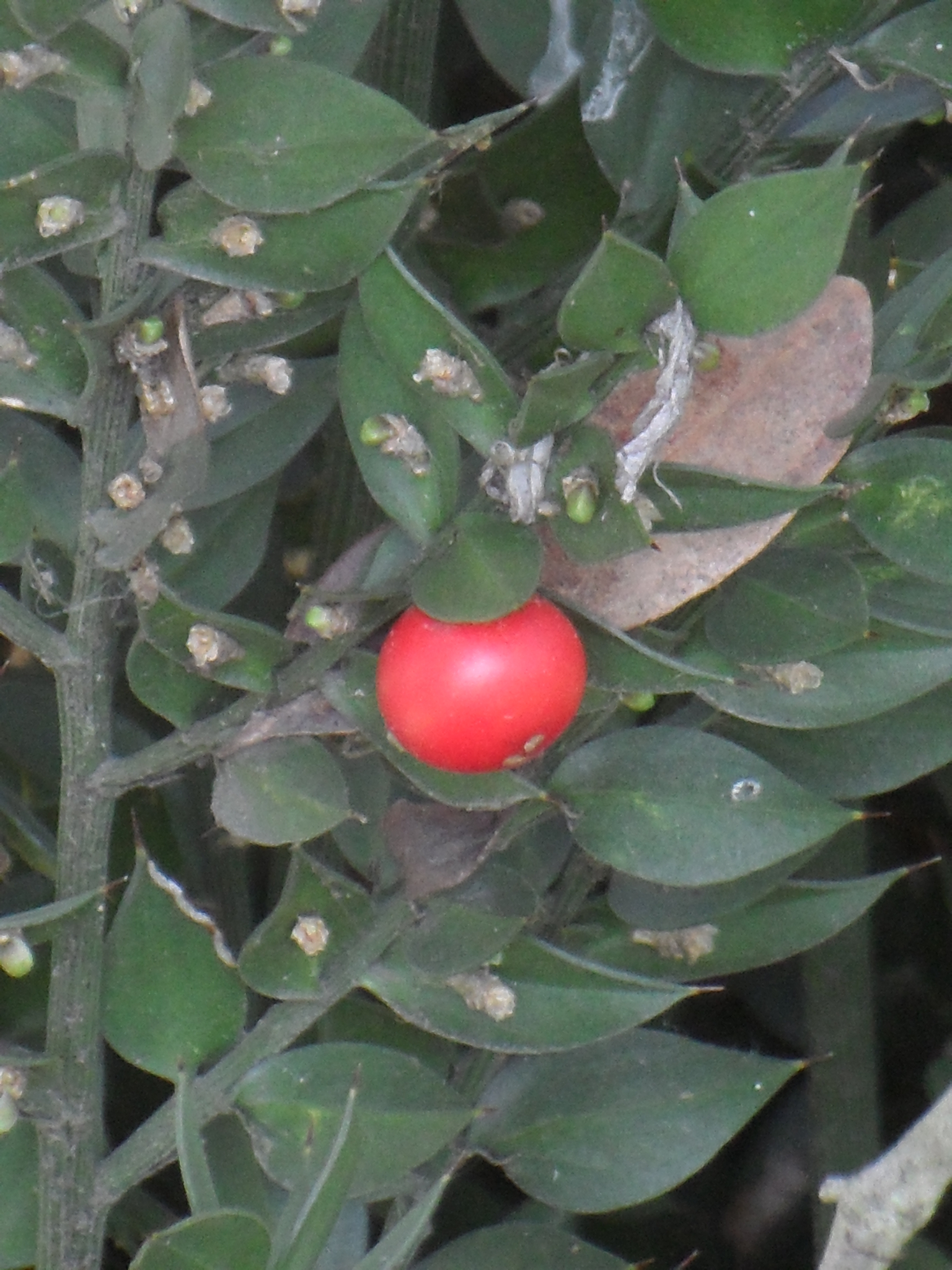
Latin – ancient Roman name for a prickly plant.
Perennial, short rhizomatous evergreen shrubs with branching, woody stems. Leaves reduced to scales. Cladodes cauline, ovate to lance-shaped, often sharp-pointed. Flowers unisexual, radially symmetrical, urn-shaped to globular. Inflorescence a several-flowered cluster borne on the cladode surface. Tepals 3+3, free. Stamens 3, fused together and attached to tepal bases. Ovary superior, ovoid. Fruit a berry. Seeds few, pale yellow.
6 species from Azores to the Caspian Sea.
Sometimes cultivated as an ornamental in sun or shade.
Shrub with cladodes, the flowers appearing to be borne directly on the leaves (cladodes), terminal racemes, and berries with yellow seeds.
Source: (2005). Ruscaceae. In: . Horticultural Flora of South-eastern Australia. Volume 5. Flowering plants. Monocotyledons. The identification of garden and cultivated plants. University of New South Wales Press.
